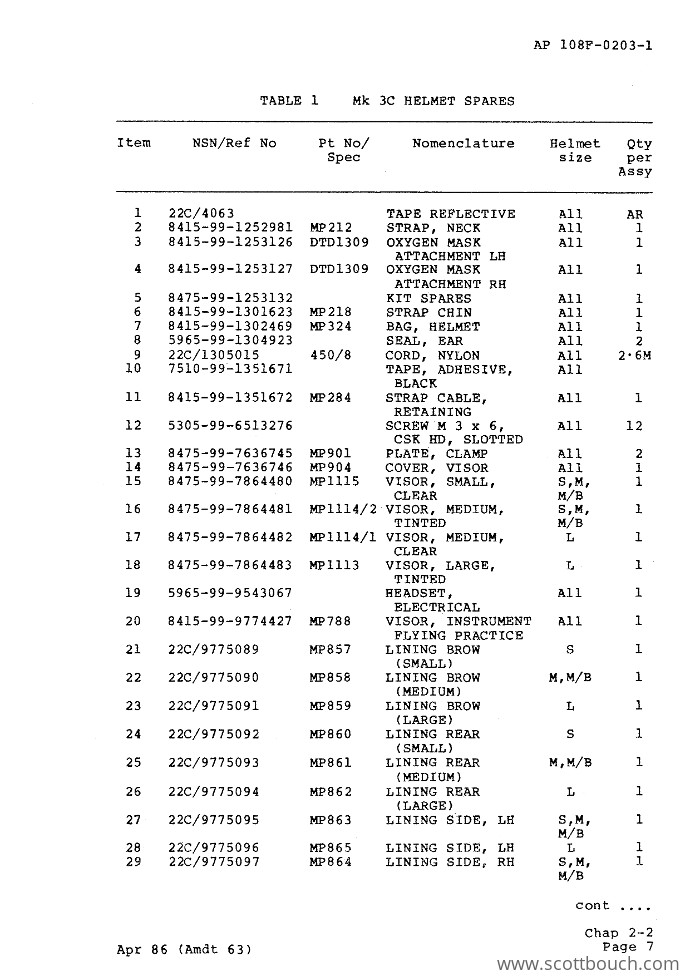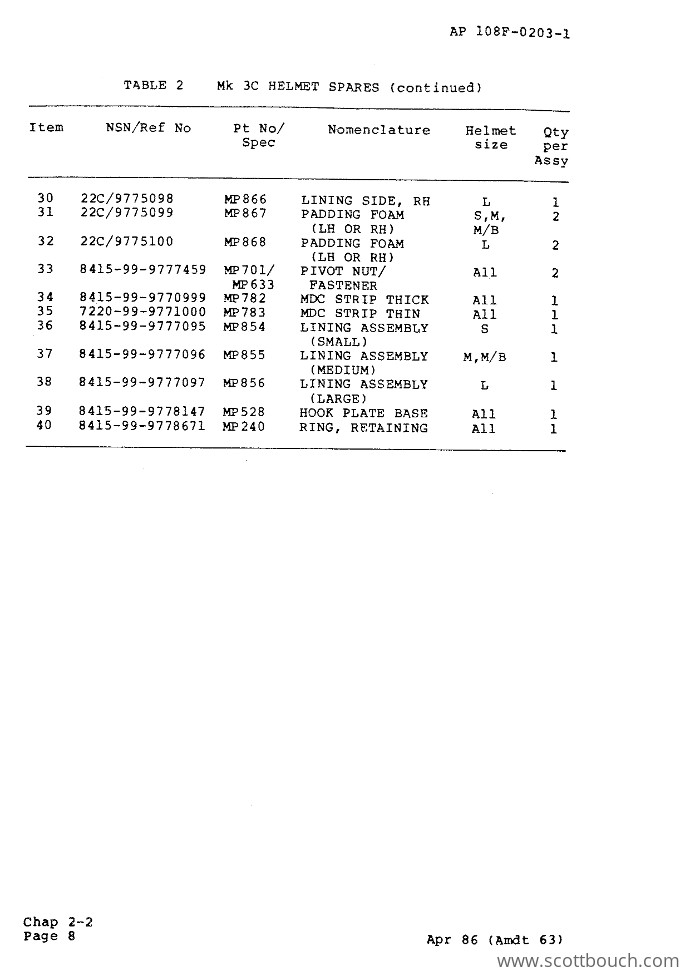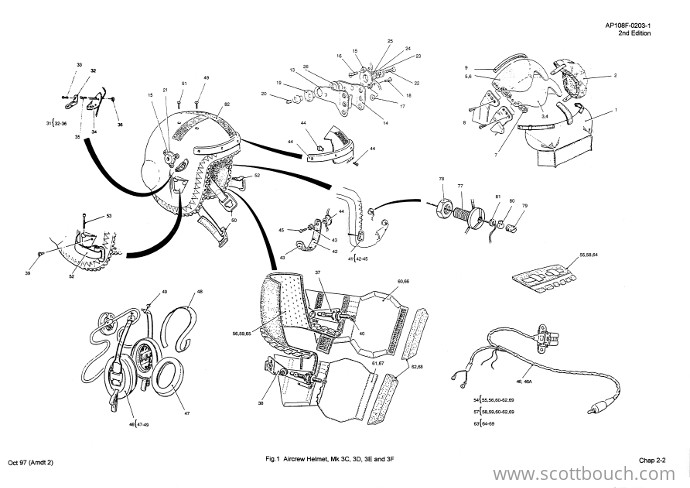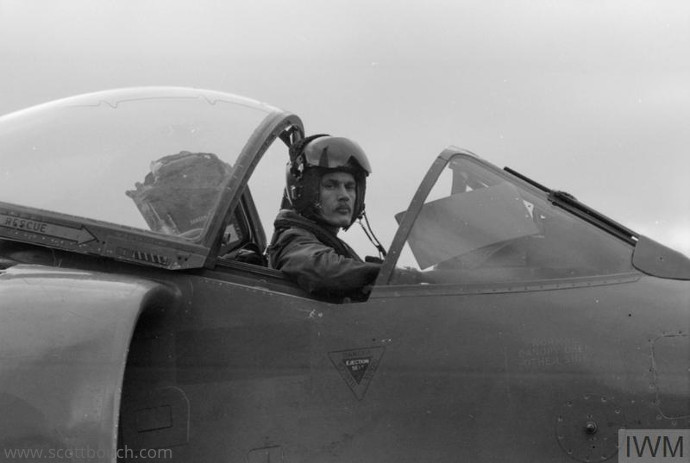British Mk3C Aircrew Flying Helmet
As per the Mk3A/B, but with new dual side-mounted visor assembly.
The dual visors offer permanent wind-blast and birdstrike protection, by the inner clear visor being latched down for the whole flight. The outer tinted visor could be positioned to suit requirements by friction pivots.
These visors not only satisfied the feature offered by the Mk2A (wind blast protection by automatically lowering the visor upon ejection), but offered permanent eye protection against birdstrike. they also are lighter and simpler to maintain.
A special version of this helmet, the Mk3E used just the tinted visor for special purpose high altitude flights.
A kit was issued that allowed Squippers to upgrade Mk2A helmets to Mk3C standard. I call these "conversion helmets".
RAF/RN AP Resources
AP108F-0203-1, Chapter 2-2, Figure 2 (Amdt 63, April 1986)
Some years ago I requested some information from Helmets Ltd, and the kind people there sent me the following 3 photocopies.
They show the latter 4-piece liner which was developed to accommodate the face screen of the AR-5 NBC (Nuclear Biological Chemical) hood by removing the foam padding in the sides if required, items 31 and 32 below.

AP108F-0203-1, Chapter 2-2, Table 1 (Amdt 63, April 1986)
This table gives the NSN (NATO Stock Numbers) or 22C/ Stores Reference Numbers and quantities required for the components of the Mk3C helmet, corresponding with Fig 2 above.


AP108F-0203-1, 2nd Edition, Chapter 2-2, Figure 1 (Amdt 2, October 1997)
Amendment 2 of AP108F-0203 includes all latter variants of Mk3 helmet, the Mk3C, Mk3D, Mk3E and Mk3F, the drawing below shows all components, I have to assume the corresponding parts table would indicate which models of helmet requires which parts..
This exploded diagram is all I have from the 2nd amendment of AP108F-0203; if anyone else out there has the manual scanned or in paper form, please get in touch!

Service Images
Sea Harrier 801 Sqn, FltLt Ian "Morts" Mortimer
This harrier is on board HMS Invincible during the flaklands conflict of 1982. The pilot, Ian Mortimer, wears an early configuration of the Mk3C helmet with early single piece liner and early flatter visors (two screws on the tinted visor).

Ian Mortimer was shot down by an Argentine Roland surface-to-air missile on June 1st 1982, he spent 9 hours in his survival dinghy until he was rescued by an 820 Sqn Sea King helicopter close to Port Stanley. He was an Air Warfare Instructor (AWI) in 801 Sqn, he was actually RAF, but seconded to teh RN.